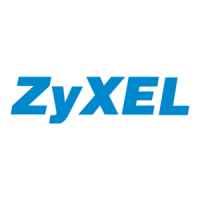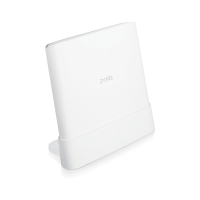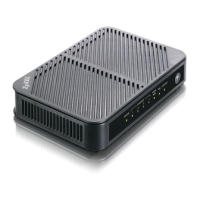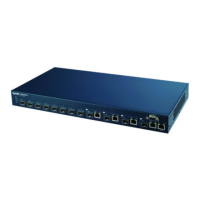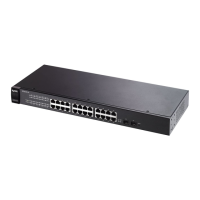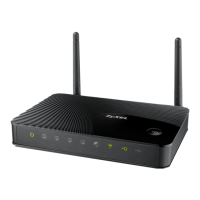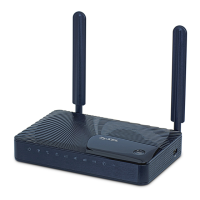Chapter 25 Voice
AX/DX/EX/PX Series User’s Guide
422
Bound Interface Name If you select AnyWAN, the Zyxel Device automatically activates the VoIP service
when any WAN connection is up.
If you select MultiWAN, you also need to select the pre-configured WAN
connections. The VoIP service is activated only when one of the selected WAN
connections is up.
Outbound Proxy
Outbound Proxy Address Enter the IP address or domain name of the SIP outbound proxy server if your VoIP
service provider has a SIP outbound server to handle voice calls. This allows the Zyxel
Device to work with any type of NAT router and eliminates the need for STUN or a SIP
ALG. Turn off any SIP ALG on a NAT router in front of the Zyxel Device to keep it from
re-translating the IP address (since this is already handled by the outbound proxy
server).
Outbound Proxy Port Enter the SIP outbound proxy server’s listening port, if your VoIP service provider gave
you one. Otherwise, keep the default value.
Use DHCP Option 120 first Select this to have the Zyxel Device use DHCP Option 120 first.
RTP Port Range
Start/End Port Enter the listening port numbers for RTP traffic, if your VoIP service provider gave you
this information. Otherwise, keep the default values.
To enter one port number, enter the port number in the Start Port and End Port fields.
To enter a range of ports,
• enter the port number at the beginning of the range in the Start Port field.
• enter the port number at the end of the range in the End Port field.
DTMF Mode
Control how the Zyxel Device handles the tones that your telephone makes when
you push its buttons. You should use the same mode your VoIP service provider uses.
RFC2833 – send the DTMF tones in RTP packets.
PCM – send the DTMF tones in the voice data stream. This method works best when
you are using a codec that does not use compression (like G.711). Codecs that use
compression (like G.729 and G.726) can distort the tones.
SIP INFO – send the DTMF tones in SIP messages.
Transport Type
Transport Type
Select the protocol used to transport the SIP packets.
For UDP and TCP, see the Service appendix for more information on the example
services and the required protocol and port number.
For more information on TLS, see Section 25.5 on page 423.
Ignore Direct IP
Select Enable to have the connected devices accept SIP requests only from the SIP
proxy/register server specified above. SIP requests sent from other IP addresses will
be ignored.
FAX Option This field controls how the Zyxel Device handles fax messages.
QoS Tag
SIP DSCP Mark Setting Enter the DSCP (DiffServ Code Point) number for SIP message transmissions. The Zyxel
Device creates Class of Service (CoS) priority tags with this number to SIP traffic that
it transmits.
RTP DSCP Mark Setting Enter the DSCP (DiffServ Code Point) number for RTP voice transmissions. The Zyxel
Device creates Class of Service (CoS) priority tags with this number to RTP traffic that
it transmits.
Timer Setting
Table 152 VoIP > SIP > SIP Service Provider > Add New Provider or Edit (continued)
LABEL DESCRIPTION
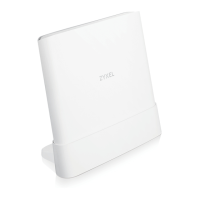
